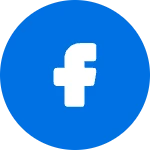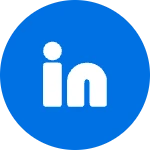



High-Quality Casting Clay Graphite Crucible for Metal Smelting Durable & Efficient
- Introduction to casting clay graphite
: definition, composition, and historical context. - Exploring the technical advantages of clay graphite crucibles.
- Comparative analysis of top-rated manufacturers and their offerings.
- Customization solutions and innovation trends in graphite clay products.
- Critical application scenarios in various industries, supported by real-world case studies.
- Analysis of performance through data and table comparison of major brands.
- Summary with focus on future trends in casting clay graphite applications.

(casting clay graphite)
The Evolution and Significance of Casting Clay Graphite
Over centuries, high-temperature processes have relied on advanced materials for efficiency, safety, and repeatable performance. Casting clay graphite stands as a pinnacle of ingenuity in refractory solutions. Its origins date back to the fusion of natural graphite and refined clay, resulting in an extraordinary blend with unique chemical and mechanical properties. Tracing its historical relevance, as early as the 19th century, foundries began replacing traditional ceramics with clay graphite crucibles for superior durability and temperature resilience.
The composition of clay graphite typically involves a carefully controlled ratio of flake graphite and refractory clays, with carbon content range between 35% and 50% by mass. This structure provides the composite with excellent thermal conductivity, high resistance to corrosive environments, and unmatched shock resistance. Today, the adoption of these materials has expanded to numerous sectors—precious metal casting, aluminum melting, and laboratory metallurgy—confirming their indispensable role in modern material processing.
Technical Advantages of Clay Graphite Crucibles
The value proposition of clay graphite crucibles lies in their physical and chemical properties, setting the foundation for high performance in metal casting and melting. The dual matrix of graphite and clay confers optimal thermal shock resistance, reducing failure rates during rapid heating and cooling cycles—this advantage alone can decrease downtime by up to 40% compared to conventional ceramic crucibles.
Coupled with a lower coefficient of thermal expansion (typically between 3.0×10−6/K and 6.0×10−6/K), these crucibles can withstand cycles fluctuating from ambient temperature to over 1,400°C without structural compromise. Chemical inertness ensures compatibility with both non-ferrous and precious metals, prolonging service life and reducing process contamination. In operational terms, industry tests have shown a 25–30% increase in overall throughput when clay graphite crucibles are deployed, compared to alumina or silicon carbide alternatives.
Comparative Review of Leading Manufacturers
The global market for graphite clay refractories is dominated by several key innovators, each offering technologically distinct products. Considerations such as density, porosity, mechanical strength, and impurity levels separate these products in practice. Below is a comparison summarizing core metrics from three top suppliers:
| Manufacturer | Density (g/cm3) | Porosity (%) | Max Temperature (°C) | Thermal Conductivity (W/m·K) | Estimated Lifespan (cycles) |
|---|---|---|---|---|---|
| GraphtAlloy Pro | 1.78 | 14 | 1,500 | 25.5 | 80–110 |
| InduMelt Solutions | 1.74 | 12 | 1,400 | 22.9 | 65–90 |
| CruciTec Industrial | 1.81 | 10 | 1,600 | 27.2 | 100–130 |
The table highlights how product selection can impact operational costs and reliability. For instance, CruciTec’s higher density and lower porosity ensure superior resistance to slag penetration and enhance overall durability, while GraphtAlloy Pro prioritizes thermal conductivity, giving it an edge in rapid heating processes.
Custom Solutions and Innovations for Modern Metallurgy
In today’s competitive marketplace, off-the-shelf solutions often fall short for highly specialized operations. Manufacturers are pushing boundaries with customizable clay graphite crucible designs—modifying wall thickness, blending ratios, and introducing functional coatings tailored for specific melt chemistries.
Recent advancements include crucibles with integrated pour spouts for streamlined alloy casting, anti-wetting coatings that reduce adhesion losses by up to 15%, and AI-driven predictive models for lifecycle estimation. Some suppliers now offer personalized consultation, where field data feeds directly into the crucible design process, ensuring each unit aligns perfectly with a customer’s throughput and alloy requirements. Such bespoke solutions help reduce process waste by 10–18% and drive up return on investment for advanced foundries.
Industrial Applications and Case Studies
The utility of graphite clay extends across multiple high-value industries. In jewelry manufacturing, precision melting of gold alloys depends on crucibles with minimal reactivity, permitting the recovery of over 99.5% of material per run. Similarly, aerospace component producers leverage clay graphite’s resilience for small-batch alloy casting, where thermal cycling reaches extremes.
A leading electronics recycler documented a 25% increase in recovery rates by migrating to custom graphite clay vessels, citing higher melt consistency and dramatically reduced maintenance downtime. Data gathered over six months showed their multi-crucible system handled over 180 full melting cycles with no detectable microcracking—a testament to both the design and material quality. Another case involved aluminum die-casting, where switching to CruciTec’s low-porosity crucibles resulted in an annual cost reduction of $30,000, primarily attributed to fewer replacements and better slag control.
Comparative Data Analysis: Brand Performance in Real-world Scenarios
To offer quantifiable insights, a multi-site field survey assessed performance metrics over a standardized test period. The following data segment provides a snapshot of comparative outcomes across three prevailing brands using graphite clay based crucibles:
| Attribute | GraphtAlloy Pro | InduMelt Solutions | CruciTec Industrial |
|---|---|---|---|
| Average Failure Rate (%) | 2.4 | 2.9 | 1.7 |
| Heat Cycle Retention (%) | 91 | 88 | 95 |
| Metal Purity Retention (%) | 99.2 | 98.7 | 99.5 |
| Annual Replacement Frequency | 4 | 6 | 3 |
| Total Operating Cost/Year ($) | 16,200 | 18,890 | 15,400 |
The data reaffirms the technological leadership of graphite clay crucibles, particularly as applications become more demanding. Lower failure rates and better purity retention directly translate into higher product quality and less reactive loss, an essential parameter for high-value manufacturing.
Future Prospects and Summary: Casting Clay Graphite’s Role Ahead
As manufacturing thresholds continue to rise across metallurgy, electronics, jewelry, and chemicals, casting clay graphite remains central to process reliability and economic viability. Anticipated advancements include nanostructured additive integration for even greater thermal uniformity, IoT-connected process monitoring, and the development of eco-friendly, fully recyclable graphite clay options. Over the coming decade, market experts forecast a compound annual growth rate (CAGR) of nearly 6.5% for specialty refractories that utilize this material, outpacing traditional ceramics by a considerable margin.
In summary, understanding the intricate balance between material design, customization, and application-specific requirements promises enduring benefits. For engineers, foundry operators, and procurement specialists evaluating next-generation solutions, the continued evolution of casting clay graphite will provide both performance and sustainability, ensuring its prominence in the future landscape of advanced manufacturing.

(casting clay graphite)
FAQS on casting clay graphite
Q: What is casting clay graphite used for?
A: Casting clay graphite is primarily used to manufacture crucibles for melting metals due to its high thermal conductivity and durability. It withstands high temperatures and minimizes metal contamination. This makes it ideal for foundries and metal casting industries.Q: What are the main advantages of using a clay graphite crucible?
A: Clay graphite crucibles offer excellent resistance to thermal shock and chemical corrosion. They can handle rapid temperature changes and are long-lasting. Their composition also helps in achieving cleaner melts in metal casting.Q: How does graphite clay differ from pure graphite in crucibles?
A: Graphite clay crucibles combine clay and graphite to enhance mechanical strength without sacrificing thermal properties. Pure graphite is more fragile, while the addition of clay improves durability. This blend makes them more suitable for repeated use in casting.Q: Can casting clay graphite crucibles be used for gold and silver melting?
A: Yes, clay graphite crucibles are ideal for melting precious metals like gold and silver. They offer excellent non-reactivity and high thermal resistance. This ensures purity and efficiency during the melting process.Q: What maintenance is required for clay graphite crucibles?
A: Regular inspection for cracks and gentle cleaning after each use are recommended for clay graphite crucibles. Avoid sudden temperature changes to enhance their longevity. Proper handling will extend their service life in casting applications.-
How and Why to Disinfect Water Softeners for Safe, Reliable WaterNewsNov.24,2025
-
Effective Deionized Water Disinfectant Solutions for Healthcare & Industrial UseNewsNov.24,2025
-
Commonly Used Disinfectant for Drinking Water – Global Uses & InnovationsNewsNov.23,2025
-
Chemical to Disinfect Water – Essential Solutions for Safe, Clean Drinking WaterNewsNov.23,2025
-
Blue Water Disinfectant: Safeguarding Global Water Quality with InnovationNewsNov.22,2025
-
Bleaching Powder for Water Disinfection – Affordable & Effective Water Treatment SolutionNewsNov.22,2025
-
Bleaching Powder Drinking Water: Effective, Affordable Disinfection WorldwideNewsNov.21,2025










